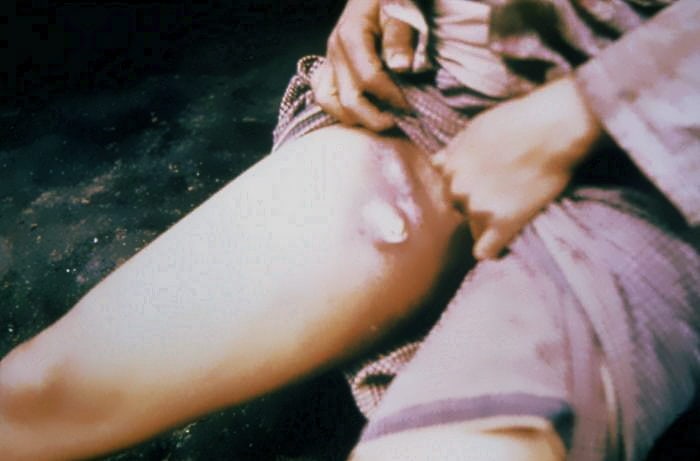In two successive years of the 17th century London suffered two terrible disasters. In the spring and summer of 1665 an outbreak of Bubonic Plague spread from parish to parish until thousands had died and the huge pits dug to receive the bodies were full. In 1666 the Great Fire of London destroyed much of the centre of London, but also helped to kill off some of the black rats and fleas that carried the plague bacillus.
Bubonic Plague was known as the Black Death and had been known in England for centuries. It was a ghastly disease. The victim’s skin turned black in patches and inflamed glands or ‘buboes’ in the groin, combined with compulsive vomiting, swollen tongue and splitting headaches made it a horrible, agonizing killer.
The plague started in the East, possibly China, and quickly spread through Europe. Whole communities were wiped out and corpses littered the streets as there was no one left to bury them.

It began in London in the poor, overcrowded parish of St. Giles-in-the-Field. It started slowly at first but by May of 1665, 43 had died. In June 6137 people died, in July 17036 people and at its peak in August, 31159 people died. In all, 15% of the population perished during that terrible summer.
Incubation took a mere four to six days and when the plague appeared in a household, the house was sealed, thus condemning the whole family to death! These houses were distinguished by a painted red cross on the door and the words, ‘Lord have mercy on us’. At night the corpses were brought out in answer to the cry,’ Bring out your dead’, put in a cart and taken away to the plague pits. One called the Great Pit was at Aldgate in London and another at Finsbury Fields.
 The King, Charles II and his Court left London and fled to Oxford. Those people who could sent their families away from London during these months, but the poor had no recourse but to stay.
The King, Charles II and his Court left London and fled to Oxford. Those people who could sent their families away from London during these months, but the poor had no recourse but to stay.
In his diary, Samuel Pepys gives a vivid account of the empty streets in London, as all who could had left in an attempt to flee the pestilence.
It was believed that holding a posy of flowers to the nose kept away the plague and to this day judges are still given a nose-gay to carry on ceremonial occasions as a protection against the plague!
A song about the plague is still sung by children. ‘Ring-a-ring of roses‘ describes in great detail the symptoms of the plague and ends with ‘All fall down’. The last word, ‘dead’, is omitted today.
The plague spread to many parts of England. York was one city badly affected. The plague victims were buried outside the city walls and it is said that they have never been disturbed since then, as a precaution against a resurgence of the dreaded plague. The grassy embankments below the city walls are the sites of these plague pits.

A small village in Derbyshire called Eyam, 6 miles north of Bakewell, has a story of tragedy and courage that will always be remembered.
In 1665 a box of laundry was brought to Eyam by a traveller. The laundry was found to be infested with fleas, and the epidemic started.
80% of the people died here and there could have been a terrible outbreak in Derbyshire had the village not had a courageous rector called William Mompesson. He persuaded the villagers not to flee the village and so spread the infection, but to stay until the plague had run its course. His wife was one of the many victims and her tomb can be seen in Eyam churchyard.
Mompesson preached in the open air during the time of the plague, on a rock in a dell now called Cucklett Church. Every year a Commemorative Service is held here on the last Sunday in August. During their ‘siege’ the villagers dropped money for provisions into a well so as not to spread the infection on the coins.

In some towns and villages in England there are still the old market crosses which have a depression at the foot of the stone cross. This was filled with vinegar during times of plague as it was believed that vinegar would kill any germs on the coins and so contain the disease.
The plague lasted in London until the late autumn when the colder weather helped kill off the fleas.
Over the centuries Bubonic Plague has broken out in Europe and the Far East. In 1900 there were outbreaks of plague in places as far apart as Portugal and Australia.
Influenza seems to be the modern form of plague. At the end of World War One an influenza outbreak circled the world during 1918 – 1919. Within a year 20 million people had died world-wide.







